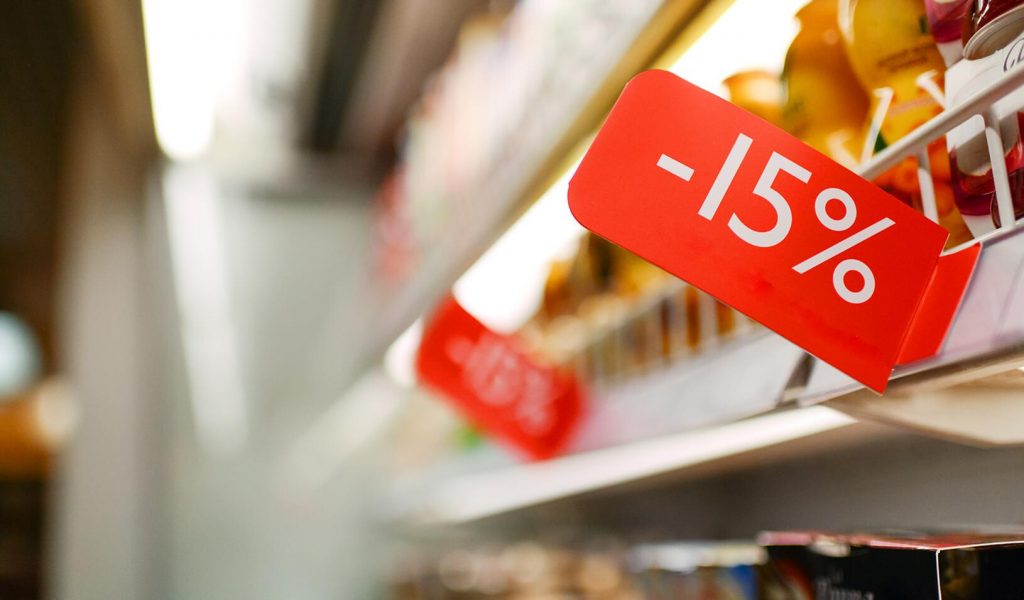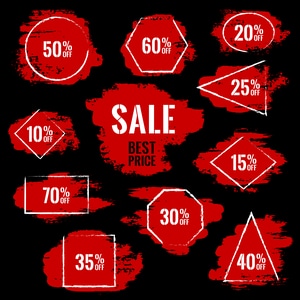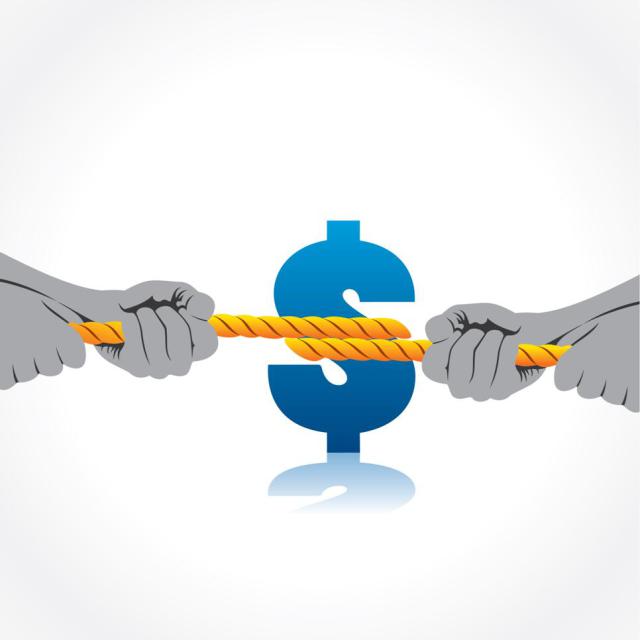Assume your company is in a difficult situation. Your product or service isn’t progressing as quickly as you’d like, and consumer interest in your brand is dwindling.
You recognize that your company requires a second chance. So, what are your options?. You could consider rebranding. You could completely restructure your sales process. However, such actions would most likely be excessive. If your company hits a snag like this, especially if you’re in retail or e-commerce, you may only need to generate some quick demand and pique consumer interest. One of the most effective strategies to accomplish this is through a practice known as promotional pricing. Let’s get a sense of what price promotion means, some of the most prominent examples of it, and what you need to do to put a successful promotional pricing strategy in place.
What is Promotional Pricing?
Promotional pricing is a pricing strategy in which a company temporarily lowers the price of a product or service in order to increase sales. Dedicated promotional materials or marketing campaigns are often used to support those deals and discounts.
A promotional pricing strategy is one of the most effective ways to generate immediate demand for goods or services. In most cases, one of these initiatives is constrained by a short time frame and extensive promotion. It creates a sense of urgency as if customers will miss out if they don’t buy right away.
Price promotion is a quick-hitting, effective strategy that is best applied in small doses. In many, if not most, cases, businesses that consistently engage in large-scale price promotion strategies end up excessively reducing profit margins and leading customers to expect lower prices.
As previously stated, the practice is commonly associated with forums such as retail and e-commerce, but various promotional pricing strategies can suit almost any business. Here are a few well-known examples of promotional pricing.
Examples of Promotional Pricing
Some of the examples of promotional pricing includes the following;
- Flash Sales
- Buy One, Get One Free (BOGOF)
- Loyalty Programs
- Seasonal Sales
#1. Flash Sales
A flash sale occurs when a company, typically in e-commerce or retail, offers significant discounts on its products or services in a relatively short period of time. Amazon, for example, holds Prime Day every year. It’s a two-day event in which it offers a wide range of deals spanning virtually every product category covered by the site. Since the vast majority of Prime Day sales aren’t available all year, the two-day window is a unique and exclusive point for those bargains. Since such sales are separated and sold to stimulate fast demand, they constitute a flash sale. As a result, it’s an example of promotional pricing.
#2. Buy One, Get One Free (BOGOF)
One of the most well-known examples of promotional pricing is the “buy one, get one free” offer. Or any alternative involving a reduced-priced product or service available with the purchase of a full-priced one. In certain instances, advertising materials such as coupons may be used to publicize this type of offer.
In this ‘price promotion strategy, a company provides a free product or service in exchange for the purchase of another. Since the price of the first “one” in “buy one, get one free” is usually higher than the price of the second “one,” when you sell using this type of discount pricing technique, you’re selling two goods — ones that are proportionally cheaper but still not truly half-priced.
As a result, you must be picky about the goods you use in this approach. Make certain that you are offering products or services from which you can still benefit at proportionately lower price points but substantially higher quantities.
#3. Loyalty Programs
A loyalty program is a promotional pricing strategy in which a company rewards brand loyalty by providing offers and discounts in return for consistent, repeat purchases.
Customer acquisition is often more costly and time-consuming than customer retention. As a result, introducing a loyalty program can be a wise and cost-effective step for companies looking to generate steady revenue from loyal customers.
The word “customer loyalty program” refers to a variety of practices. It could be anything from a big airline using a frequent flier miles scheme to a small sandwich shop handing out punch cards for free sandwiches after a certain amount of visits.
If you decide to implement a customer loyalty program, the framework depends on the size and scope of your company, as well as the overall goal of the program’s implementation.
#4. Seasonal Sales
A seasonal sale is basically an extension flash sale. It is usually tailored to transfer merchandise that applies to a particular time of year. A seasonal sale may be a summer promotion for discounted swimsuits or a holiday promotion for famous toys. Implementing a seasonal sale works well for companies that sell a seasonally specific product or service. Consumers are also more open to seasonal sales of items that have some sort of appropriate seasonal meaning.
Consumers would be more puzzled than interested if your organization runs a campaign to aggressively promote and transfer winter coats in July.
When attempting to coordinate this type of promotional pricing, the relationship between product or service and seasonal timing may be the most important factor to consider.

Promotional Pricing Strategy
Finding the best promotional pricing plan for your company is dependent on a few main variables and questions. You must understand the “why,” “how,” and “when” of your promotional pricing decision.
Why Promotional Pricing?
The first question you must answer is why you want to introduce a promotional pricing plan. Are you attempting to build interest in a new product or service? Are you attempting to generate as much consumer traffic as possible as soon as possible? Or are you looking to get rid of any excess inventory? Do you want to reward your customers for their loyalty?
Before settling on what will work best for your company, you should have a general idea of what you want from your promotional pricing strategy.
A strategy for moving out-of-season inventory is unlikely to be the same as one for rewarding customer loyalty. Before you get into the specifics, figure out what you want to achieve in general. If you’ve determined the “why,” you can move on to the “how.”
How do you go about Price Promotion?
This is where you transform the “why” you discovered earlier into an actionable solution, but the overarching explanation for your promotional pricing plan is just part of the equation.
There are a few other important things to remember. What kind of advertising budget do you have? How does the company run? Do you work in traditional retail? Do you sell on the internet?
Assume you want to get rid of some surplus inventory from a small, independent retail outlet. In that case, you may want to consider holding a flash sale for those products and advertising them with banners, flyers, and signs in your storefronts. However, if you run a large e-commerce site and want to attract repeat sales, you might start a customer loyalty program and promote it through paid social media ads.
There is no one-size-fits-all promotional pricing model. What works for one organization should not work for another. Before deciding on a particular plan, you should understand the company’s credibility, market standards, brand identity, immediate needs, long-term objectives, and financial position.
When will you do Promotional Pricing?
Another important aspect to consider when deciding on an effective promotional pricing plan is timing. The “when” in this phrase may refer to a few different items, including the length of the price promotion strategy and the time of year.
Promotional pricing techniques come in a variety of sizes and shapes. A continuous customer loyalty program would obviously outlast a two-day flash sale. It’s critical to determine a time period that fits your budget while also allowing you to follow through with the “why” you chose at the start of the project.
The exact dates you select for your strategy to run its course is another important element in many promotional pricing programs. Some tactics work best at certain times of the year.
On holiday weekends like Memorial Day and Veterans Day, promotional pricing, especially flash sales, is notoriously common. So, if you’re thinking about introducing a promotional pricing plan, keep in mind when it’s going to happen.
How to Determine the Most Appropriate Promotional
Pricing for Your Company
There are three keynotes to focus to consider when you want to determine the most appropriate promotional pricing for your business. They are Business, Branding and the calclations.
#1. The Business
You know your business goals and objectives. Does it align with promotional pricing strategy? will it yield to positive results in the sort and long run? Is there enough capacity to handle a massive increase in business?
#2. Branding
As much as discount can increase sales and attract more customers possibly increase customers loyalty, it must be done with carefulness. You need to be sure that discounting will not affect the business brand.
#3. Calculations
The following are eight crucial calculations that must be done:
- The incremental cost of sales (the actual cost percentage for a new customer)
- The advertising value of promoting the business to a large number of people
- Average sale
- Redemption percentage
- Percentage of coupon users who are existing customers
- Number of coupons each customer buys
- Percentage of coupon customers who become regular customers
- The normal customer acquisition cost through advertising
- New customers repeated purchases
Can I use a coupon during a promotional pricing event?
It depends on the terms of the promotion and the coupon. Some promotions may not be combinable with coupons, while others may. Be sure to check the terms and conditions of both the promotion and the coupon for more information.
Do I have to sign up for anything to take advantage of promotional pricing?
It depends on the company and the promotion. Some promotions may require you to sign up for a mailing list or loyalty program, while others may not. Be sure to check the terms and conditions of the promotion for more information.
How do I know if a product is eligible for promotional pricing?
Products eligible for promotional pricing are typically clearly marked or advertised. Check the company’s website, advertising, or in-store signage for more information.
Can I use promotional pricing to purchase items as gifts?
Yes, you can use promotional pricing to purchase items as gifts.
Are there any restrictions on using promotional pricing?
Restrictions may vary depending on the company and the promotion. Some promotions may have restrictions on the type of product or service, the quantity that can be purchased, or the geographic location. Be sure to check the terms and conditions of the promotion for more information.
Can I return an item purchased during a promotional pricing event?
Return policies for items purchased during promotional pricing events are subject to the same policies as regular purchases. Be sure to check the company’s return policy for more information.
Conclusion
It will take a lot of thinking, experience with your company, industry expertise, and careful consideration to determine which promotional pricing strategy works best for you. It can be difficult to determine the right “why,” “how,” and “when” for you.
Even, if you take the time to consider the different strategies available, research what has worked well for businesses similar to yours, and carefully calculate rates that will be appealing to customers without eroding your income, you’ll be able to execute a promotional pricing strategy that will serve you well.
Promotional Pricing FAQs
Who uses promotional pricing?
This method has been used in marketing campaigns for countless years, with merchants and vendors offering promotional deals to the public for bulk purchases, end-of-season sales, and much more in a way to entice or even clear inventory in an efficient manner.
Why is promotional pricing important?
Promotional pricing drives better revenue and cash flow for the short term. This is because of the increase in sales volume due to price reduction. The low price of individual products leads to higher revenue in bulk as larger quantities get sold.
How does promotion affect price?
Thus, the type of product and its cost also affects the pricing decision for the product. 3) Promotions – The major factor due to which marketing mix affects pricing decisions is promotions. … Thus they have cheaper pricing. Thus, promotions and product combine can also affect the marketing mix price decisions.
What is the best form of promotion?
Personal selling and advertising are the two best known forms of promotion. In terms of cost and market impact, it is the most important form. Personal selling is an important part of promotional programme. It is commonly supported by advertising.






